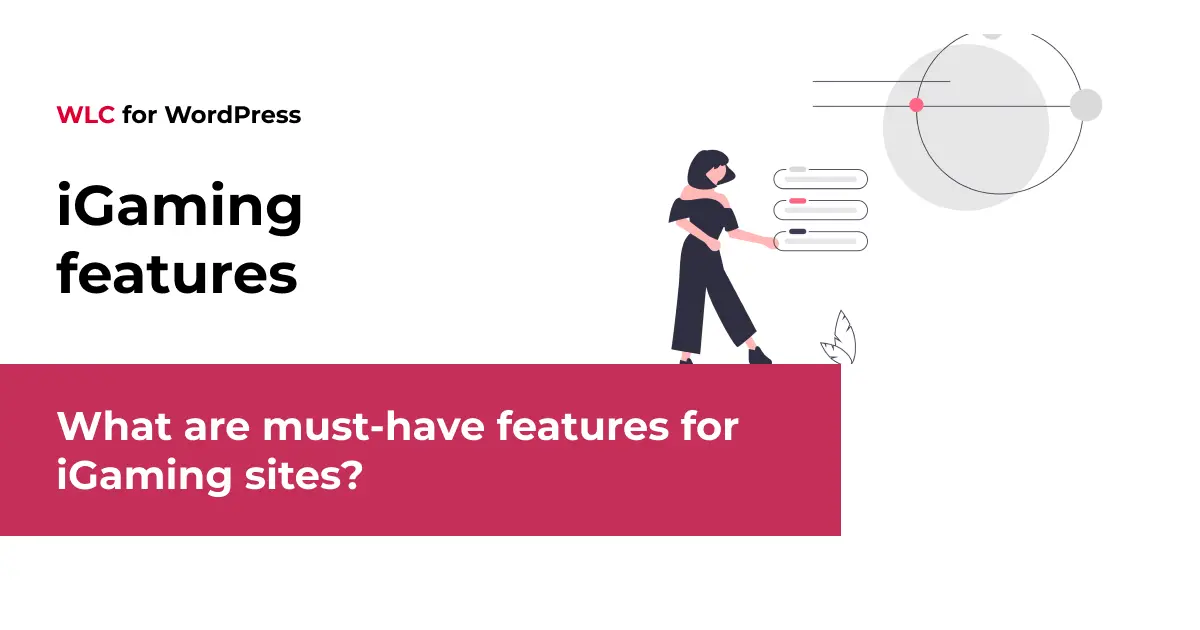Category: WordPress
What are WordPress custom post types?

WordPress custom post types are specialised content containers that extend beyond the standard posts and pages, allowing developers to create structured content types tailored to specific business needs. They enable you to organise different types of content—such as portfolios, testimonials, products, or events—with their own unique fields, templates, and administrative interfaces whilst maintaining WordPress’s familiar content management experience.
At White Label Coders, we often use custom post types when building custom WordPress websites for industries like iGaming, e-commerce, and fintech, where structured content is critical for scalability and user experience.
Understanding WordPress custom post types and their role in modern web development
Custom post types represent one of WordPress’s most powerful features for creating structured content that goes far beyond traditional blog posts and static pages. Think of them as specialised containers designed to hold specific types of information that your website needs.
When you’re building a custom WordPress website, you’ll often encounter content that doesn’t fit neatly into the standard post or page format. A photography studio needs portfolios, a restaurant requires menu items, and a consultancy firm wants to showcase team members. This is where custom post types shine.
These specialised content types enable developers to create organised, searchable, and manageable content structures that improve both user experience and administrative efficiency. They maintain all the benefits of WordPress’s content management system whilst providing the flexibility to handle diverse content requirements that modern websites demand.
What are WordPress custom post types and how do they differ from regular posts?
Custom post types are specialised content containers that function similarly to regular posts but are designed for specific types of content with unique characteristics and display requirements.
WordPress comes with several default post types: posts (for blog content), pages (for static content), attachments (for media files), revisions, and navigation menus. Regular posts are designed for chronological content like blog articles, complete with categories, tags, and comment functionality.
Custom post types, however, are purpose-built for specific content needs. They can have their own custom fields, taxonomies, and administrative interfaces. For instance, a “Product” custom post type might include fields for price, specifications, and inventory status—information that wouldn’t make sense for a regular blog post.
The key differences include:
- Custom administrative interfaces tailored to specific content types
- Unique URL structures and archive pages
- Specialised template files for display
- Custom taxonomies and metadata fields
- Different user permissions and capabilities
When should you use custom post types for your WordPress website?
You should implement custom post types whenever your content doesn’t fit comfortably within the standard post or page structure, particularly when you need repeatable content formats with consistent fields and layouts.
Consider custom post types for these common scenarios:
Portfolio websites: Photographers, designers, and creative professionals need to showcase work samples with specific details like project dates, client information, and technical specifications.
Business websites: Team member profiles, client testimonials, case studies, and service offerings all benefit from structured custom post types that ensure consistent presentation.
Event management: Events require specific information like dates, venues, ticket prices, and speaker details that regular posts can’t handle effectively.
E-commerce extensions: Beyond WooCommerce products, you might need custom post types for suppliers, brands, or product categories with unique attributes.
Educational platforms: Courses, lessons, instructors, and resources each require different fields and relationships that custom post types can manage elegantly.
The rule of thumb is simple: if you find yourself repeatedly adding the same types of custom fields to regular posts, or if your content needs special display treatment, it’s time to consider custom post types.For instance, in an iGaming project, custom post types were used to separate casino reviews, bonuses, and news — ensuring players could filter and access the right content quickly.
How do custom post types work in WordPress architecture?
Custom post types integrate seamlessly into WordPress’s existing architecture by utilising the same database structure as regular posts whilst maintaining their unique characteristics through the post_type column.
All WordPress content, regardless of type, is stored in the wp_posts table. The post_type column distinguishes between different content types—’post’ for blog posts, ‘page’ for static pages, and your custom identifiers for custom post types.
When WordPress processes a request, it queries the database based on the post_type value, then applies the appropriate template hierarchy. For a custom post type called ‘portfolio’, WordPress looks for templates in this order:
- single-portfolio.php (for individual items)
- archive-portfolio.php (for listing pages)
- Falls back to single.php or archive.php if custom templates don’t exist
The WordPress query system handles custom post types through the same WP_Query class used for regular posts, but with additional parameters to specify the post type. This means you can use familiar functions like get_posts() and WP_Query() with custom post types.
Custom post types also integrate with WordPress’s rewrite rules system, creating clean URLs like yoursite.com/portfolio/project-name/ automatically, whilst maintaining all the SEO benefits of WordPress’s permalink structure.
n our custom WordPress development projects, we frequently connect custom post types with external APIs (for example, odds feeds or CRM systems), creating seamless data flows that standard posts and pages could never handle.
What are the different ways to create custom post types in WordPress?
There are three primary approaches to creating custom post types: code-based implementation using the register_post_type() function, plugin-based solutions, and theme-integrated methods.
| Method | Best For | Advantages | Considerations |
|---|---|---|---|
| Code-based (register_post_type()) | Developers, permanent implementations | Full control, no plugin dependency | Requires coding knowledge |
| Custom Post Type UI Plugin | Non-developers, quick setup | User-friendly interface, no coding | Plugin dependency |
| Advanced Custom Fields (ACF) | Complex field requirements | Powerful field management | Learning curve for advanced features |
| Theme Integration | Theme-specific content | Seamless theme integration | Lost when changing themes |
The code-based approach offers maximum flexibility and is ideal for WordPress custom development projects. You add the register_post_type() function to your theme’s functions.php file or a custom plugin.
Plugin-based solutions like Custom Post Type UI provide intuitive interfaces for creating custom post types without coding. They’re perfect for content managers and designers who need quick results.
For complex projects requiring extensive custom fields and relationships, Advanced Custom Fields Pro offers comprehensive custom post type creation alongside its powerful field management capabilities.
Key takeaways for implementing WordPress custom post types effectively
Successful custom post type implementation requires careful planning around naming conventions, user permissions, template creation, and long-term maintenance considerations.
Choose descriptive, singular names for your post types and avoid conflicts with existing WordPress post types or common plugin names. Use underscores rather than hyphens in post type names, and keep them under 20 characters for database efficiency.
Plan your custom fields and taxonomies before implementation. Consider what information each post type needs, how users will search and filter content, and what relationships exist between different content types.
Create custom templates for your post types to ensure proper display. Even basic single-{post_type}.php and archive-{post_type}.php templates provide better user experience than relying on default fallbacks.
Consider user roles and capabilities carefully. Determine who should be able to create, edit, and delete each custom post type, and configure permissions accordingly.
Document your custom post types thoroughly, including field purposes, template locations, and any custom functionality. This documentation proves invaluable for future maintenance and team collaboration.
Finally, test your custom post types thoroughly across different user roles, devices, and scenarios. Ensure they integrate properly with your theme, plugins, and any custom functionality your website requires.
Custom post types transform WordPress from a simple blogging platform into a powerful content management system capable of handling complex, structured content requirements whilst maintaining the familiar WordPress experience that users love.
Custom post types unlock WordPress’s true potential as a CMS. At White Label Coders, we design and implement them as part of custom WordPress website development, helping businesses organise complex data structures efficiently while keeping the platform secure, scalable, and easy to manage. Let’s talk!






